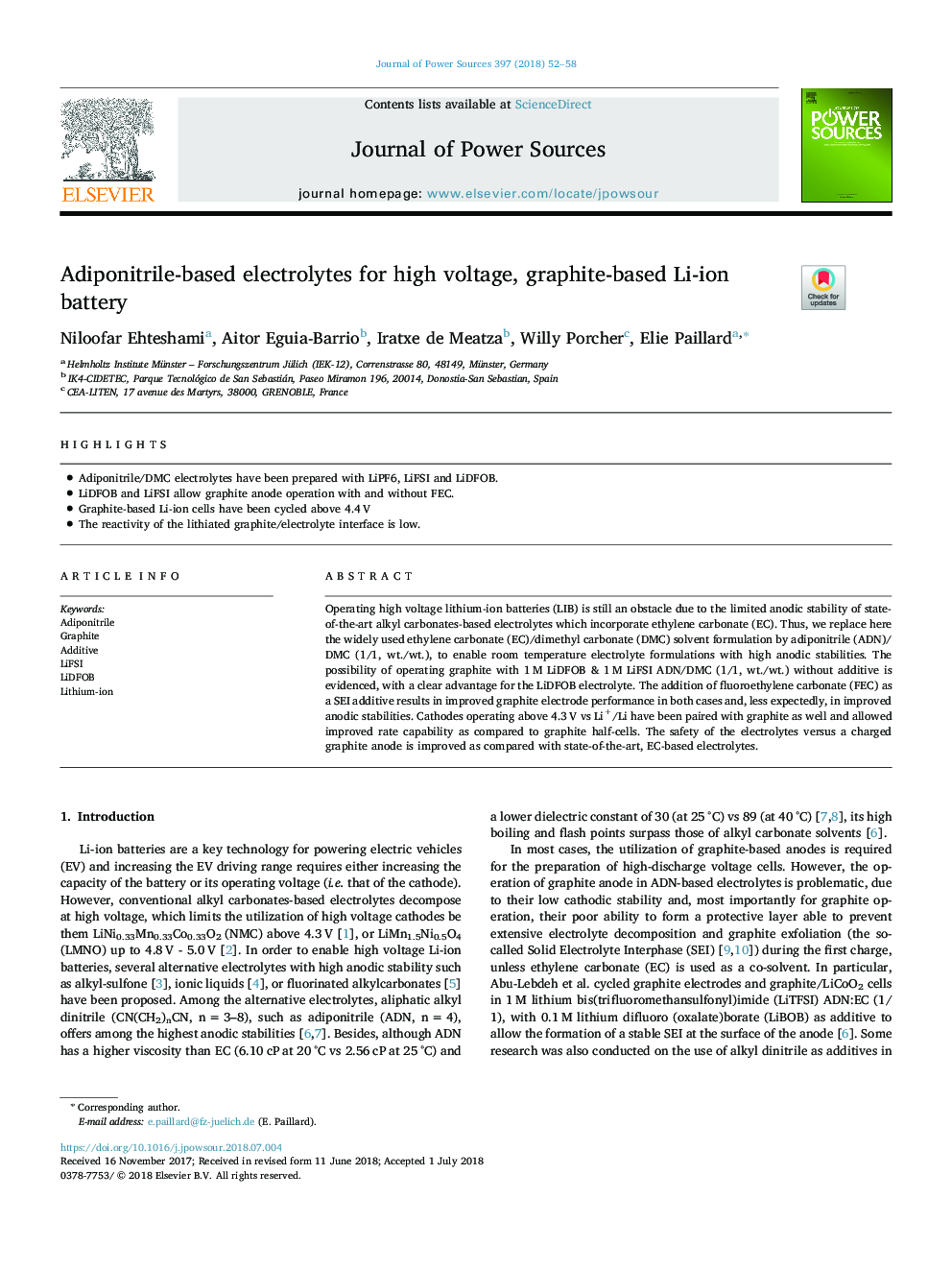| Article ID | Journal | Published Year | Pages | File Type |
|---|---|---|---|---|
| 7724739 | Journal of Power Sources | 2018 | 7 Pages |
Abstract
Operating high voltage lithium-ion batteries (LIB) is still an obstacle due to the limited anodic stability of state-of-the-art alkyl carbonates-based electrolytes which incorporate ethylene carbonate (EC). Thus, we replace here the widely used ethylene carbonate (EC)/dimethyl carbonate (DMC) solvent formulation by adiponitrile (ADN)/DMC (1/1, wt./wt.), to enable room temperature electrolyte formulations with high anodic stabilities. The possibility of operating graphite with 1â¯M LiDFOB & 1â¯M LiFSI ADN/DMC (1/1, wt./wt.) without additive is evidenced, with a clear advantage for the LiDFOB electrolyte. The addition of fluoroethylene carbonate (FEC) as a SEI additive results in improved graphite electrode performance in both cases and, less expectedly, in improved anodic stabilities. Cathodes operating above 4.3â¯V vs Li+/Li have been paired with graphite as well and allowed improved rate capability as compared to graphite half-cells. The safety of the electrolytes versus a charged graphite anode is improved as compared with state-of-the-art, EC-based electrolytes.
Related Topics
Physical Sciences and Engineering
Chemistry
Electrochemistry
Authors
Niloofar Ehteshami, Aitor Eguia-Barrio, Iratxe de Meatza, Willy Porcher, Elie Paillard,
